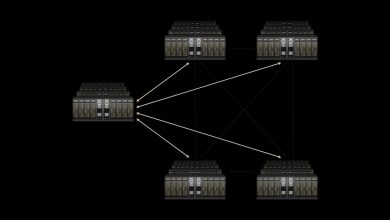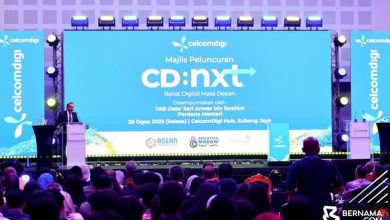Meeting Modern Data Centre Challenges With Next-Generation Solutions

The rapid expansion of data centre real estate is the only answer to this unquenchable thirst for digital transformation. And as the race to build new data centres heats up, Southeast Asia looks well positioned to benefit significantly.
Singapore, despite the temporary moratorium on building data centres, has new projects lined up. Meanwhile, Indonesia and Malaysia recently secured high-profile data centre investments from Big Tech companies. Overall, Southeast Asia’s burgeoning data centre market is predicted to grow at an annual growth rate of 13%, with Indonesia, Malaysia, and Singapore expected to lead the way.
Global digitalisation is precipitating this data centre boom, and it will only grow bigger with the unabated rise of Artificial Intelligence (AI), whose unparalleled data processing, storage, and management requirements are best met by the unrivalled data processing, storage, and management capabilities of modern data centres.

Explore the data centre landscape of Southeast Asia by reading the Huawei white paper “Building Next Generation Data Centre Facility in ASEAN” HERE.
Southeast Asia, however, needs to overcome several related challenges to sustain the momentum of this burgeoning data centre scene—valued at USD $17.73 billion in 2023 and projected to reach USD $17.73 billion in 2029. Taking into account the emergence of AI and its massive computing and storage requirements, Huawei has identified four such challenges:
- Higher requirements on power capacity, renewable energy ratio, and power grid stability. Data centres consume substantial amounts of energy and are already responsible for 3% of the world’s electricity consumption—up from 2% in 2022. AI computing will only send this energy requirement into overdrive, leading to another important issue: Sustainability. It isn’t enough that data centres meet their massive energy requirements; they must do so in a sustainable, environment-friendly way.
- Fast service rollout and on-demand capacity expansion. Constructing a data centre takes years—and that is not good enough with digitalisation and cloudification in full effect. Therefore, quick rollouts are best for business, enabling quicker monetisation and a better chance of profitability.
- Lack of intelligent functions for Operation and Maintenance (O&M). New technologies are being integrated into new data centres, increasing their complexity and O&M requirements. Traditional O&M methods—and, in some cases, a complete lack of qualified personnel—precipitate reliability and efficiency issues that compromise the quality and integrity of the data centre.
- Increased reliability and availability requirements. Data centres cannot afford outages, as a single one can adversely impact the economy and people’s livelihoods. This is the reason reliability and availability are fundamental to any data centre; without them, all its other features are rendered meaningless and useless.
Next-Generation Data Centre
In light of these considerable challenges, Huawei proposes the next-generation data centre as a solution. It represents a way forward for Southeast Asia to keep pace with rapid digital transformation, solve the aforementioned challenges, and fully benefit from this data centre boom.
A next-generation data centre meets the requirements of the modern data centre and is hallmarked by four key pillars:
- Reliable. Huawei’s pioneering modular design and AI preventive maintenance guarantees safety and reliability at all levels, ensuring uninterrupted service and preventing outages.
- Simplified. Hardware convergence enables a minimalist approach to data centre architecture and systems, eliminating complexities and enhancing scalability.
- Sustainable. Huawei’s innovative, environment-friendly solutions allow next-generation data centres to meet their massive energy requirements while remaining sustainable and carbon neutral.
- Smart. AI and digital technologies, like 3D visualisation and digital dashboards, enable facility automation, allowing for intelligent management of data centre facilities.
In front of Southeast Asia lies an unprecedented opportunity to keep pace with global digitalisation and profit simultaneously by becoming the world’s next data centre hub. However, considerable challenges stand in the way, and they are best overcome with next-generation solutions.
Whatever your involvement in data centres—whether you are building them, running them, creating legislation for them, or just using them—download this white paper by Huawei to deepen your understanding of the most pressing issues you need to consider.

.png)



